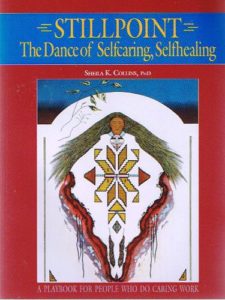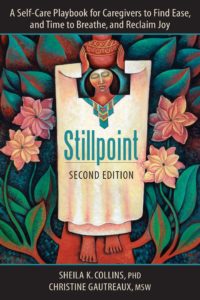 When I wrote the first version of my book on self-care 25 years ago the big issue around self-care, especially for women, was giving ourselves permission to do it. Wasn’t it selfish to focus on ourselves? Wasn’t the goal to forget about ourselves and selflessly serve others?
When I wrote the first version of my book on self-care 25 years ago the big issue around self-care, especially for women, was giving ourselves permission to do it. Wasn’t it selfish to focus on ourselves? Wasn’t the goal to forget about ourselves and selflessly serve others?
Yuck! Fortunately, we’ve moved beyond that place of unrealistic martyrdom, though it’s sometimes unclear whether we all mean the same thing when we speak of self-care. [bctt tweet=”A recent article in the New York Times demonstrated that though the notion of self-care may be the same, as is our realization of the need for it, what people actually do to take care of themselves can be quite unique.” username=”@SheilaKCollins”] Employees of the Times came up with some unique strategies. How about cooking a favorite family recipe, rolling coins into rappers to have a sense of achievement while mindlessly watching television or something we cover in the book, learning and practicing saying “no” to other people’s requests. https://www.nytimes.com/interactive/2018/08/11/style/how-i-self-care.html
While writing Stillpoint and noticing what felt good to me while caregiving a family member I discovered something I had trouble admitting. [bctt tweet=”Even today, one of the most self-caring things I can do for myself in my chaotic life is to work in a focused way and actually get things accomplished.” username=”@SheilaKCollins”] There is that joyous moment when you check off an item on your “To Do list,” or even that moment of clarity when you have made the “To Do list.” This organizing the future into something that is likely attainable is referred to as “shaping” in my InterPlay improvisational community. And like almost anything else we do for self-care it’s easy to over-do it. If work’s the only way I take care of myself, I get in deep trouble quickly. My husband claims I have A.I.D – “Attention Intensity Disorder.” He coined this new “disease” when he saw how carried away I can get on nearly any task. ‘Just one more flat of flowers to plant,” (never mind it’s pouring down rain.)
Christine Gautreaux, my co-author of the revised edition of my book Stillpoint: A Self-Care Playbook for Caregivers to Find Ease, and Time to Breathe, and Reclaim Joy knows me well. She knows I need reminders to interrupt whatever I’m doing so I don’t overdo it, and I’ve noticed she can have that difficulty too. After our work sessions together on Skype, one of us is likely to say, “Remember, it’s time to Step Away From the Screen.”
I’d love to hear how you self-care since we all need a variety of self-care strategies to alternate with rest in order to preserve or improve our own health while being in caring connection to others.
Sheila
New York Times article – How I self-care 8/11/2018
Help us launch Stillpoint: A Self-Care Playbook for Caregivers to Find Ease, and Time to Breathe, and Reclaim Joy on Wednesday, September 12th – email me at Sheilakcollins@gmail.com if you want to be a part of our launch team. 

